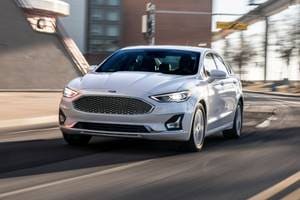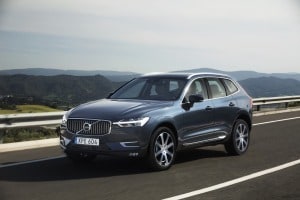Know Before You Buy
Market Segment
A sedan is defined as a vehicle with four doors that features a traditional trunk design, but we have included four-door hatchbacks among our recommended choices. There are four basic sizes: subcompact, compact, midsize and large (or full-size). Some models don't fit neatly into any one group.
Price
Subcompact and compact sedans can range from $10,000 for an economy sedan to more than $40,000 for a luxury model. Midsize sedans start around $18,000 and top off in the $80Ks. Large sedans run from the low $20Ks for your typical family sedan to more than $300K for an exotic.
Performance & MPG
You'll see three-, four-, five-, six-, eight- and even 12-cylinder engines in this group, as well as hybrids and all-electric cars. An influx of new designs and technologies are improving fuel economy throughout the range of sedans, meaning that midsize sedans are getting the fuel economy that compacts used to achieve.
Safety
Family shoppers should find features like antilock brakes, front-seat side airbags, full-length side curtain airbags and stability control as standard on every model. Rearview cameras are also increasingly standard, while high-tech electronics that warn inattentive drivers of blind-spot intrusion and impending collisions have migrated from strictly the luxury realm down to mainstream brands. Shoppers should also be aware of crash test scores produced by the National Highway Traffic Safety Administration (NHTSA) and the Insurance Institute for Highway Safety (IIHS).
Features
Luxuries like rearview cameras, automatic climate control, heated seats, smartphone interfaces, navigation systems, keyless start systems and Bluetooth capability can often be found in non-luxury sedans. Look for them as you shop. Keep an eye open for differences in the number and type of seat adjustments and unique storage solutions.
Roominess
Most sedans can transport four adults in reasonable comfort. Taller families and those with five to carry should consider a large sedan.
Cargo Space
Subcompacts offer 10-12 cubic feet of trunk space, compacts offer 12-13, midsize sedans offer 14-16 and large sedans offer 17-21. If you'll be hauling anything bulky, get a sedan with folding rear seats or a ski pass-through, at the very least. Four-door vehicles with hatchbacks are the best choice for those who prioritize cargo space and versatility.
All-Wheel Drive
Consumers should only pay extra for AWD if they regularly drive in snow or otherwise slippery conditions. Though the weight penalty of all-wheel drive is minimal in modern vehicle designs, there can be a compromise in fuel economy. Some sport sedans (specifically those that would otherwise be front-wheel drive) feature all-wheel drive to enhance control and stability during high-speed maneuvers.
Transmission Types
While traditional manuals with clutch pedals are still recommended for sport sedans and underpowered compacts, there are now several different kinds of automatics. The conventional automatic features a torque converter and sometimes can be shifted manually with either a lever on the center console or paddles on the steering wheel. Automated manual transmissions used to be the stuff of exotic sports cars, but now they've found their way into economy cars for their ability to maximize the power potential and fuel efficiency of low-powered engines. While such transmissions make manual shifting more responsive, they operate just like a normal automatic, although shift quality is generally less smooth. Finally, there's the continuously variable transmission (CVT), which automatically selects from an infinite ratio to keep the engine in a sweet spot of power and/or fuel economy. A typical downside of CVTs is the way they can drone during acceleration.
Cost to Own
Sedans are the standard by which all other vehicles are judged. Although sedan prices and sizes vary widely, buyers looking for low-cost transportation will inevitably end up with four doors and a trunk. Low-priced compact and midsize sedans are the cheapest to own; they don't use much gas, they don't cost a lot to insure and their lack of complexity keeps repair bills down. Luxury sedans may come with a limited free maintenance plan, but expect higher costs as they age. Higher-performance sedans often cost more to insure and maintain.





